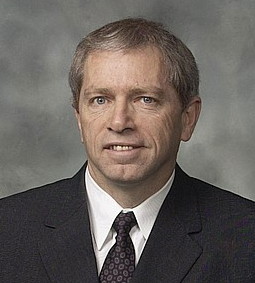
Associations
News
CANASA revives plan for self-regulation

CANASA is taking another shot at achieving self-regulation for the electronic security industry in Ontario, but some members wonder if the reasoning is too narrowly focused on the issue of false alarms.
February 29, 2008 By Jennifer Brown
Attempts at self-regulation for the industry were first made in Ontario
in the ’70s and most recently in 2000, but each time the campaign has
lost steam along the way. This time, CANASA executive director Ken
Mitchell says the goal is to reach self-regulation by 2011.
If self-regulation is not achieved, Mitchell says the industry runs a
greater risk of being regulated by government, and recent moves by the
Durham Regional Police Service, located east of Toronto, indicate the
clocking is ticking ever louder this time.
“If we don’t self-regulate, and we don’t self-regulate the right way,
the answer will be government regulation,” Mitchell said at a meeting
of members in Toronto on Feb. 19.
Presenting his plan of action, Mitchell highlighted Durham Region’s latest response to dealing with false alarms — “In Durham Region, this is a regulated industry. The Durham Police
Chief has said he’s tired of managing business relations between your
businesses and the taxpayer. If we don’t solve it, they will solve it
for us,” he says, noting that “each chief in Canada wants to have their
own policy.”
Driving home the point, Mark Fairly, CANASA’s chairperson for the
self-regulation committee says, “fear should be driving the move to
self-regulation.”
A revised Alarm Management Program took effect in Durham Jan. 1, 2008
no longer requiring residents/business owners to register their
premises for alarm response, nor pay re-instatement fees. Premises will
no longer be subject to a suspension from the program, meaning Durham
officers will continue to provide protection and service.
Instead, all fees will be charged directly to the central monitoring stations representing the premise owners.
Durham Regional Police will charge the central monitoring station a fee
of $125 for all monitored alarms requesting a police dispatch which are
found to be false.
If the alarm is in fact an indication of criminal activity, there will be no fee required from the central monitoring station.
Durham also requires all central monitoring stations to have a Service
Agreement with its police service on file. Requirements for the Service
Agreement include membership in CANASA and Certification with the
Underwriters’ Laboratories of Canada.
The Durham Region amended 2008 Alarms Management Policy also requires
that all alarm calls be verified prior to a request for police
response. A verified alarm call will be dispatched to the first
available police unit. A non-verified alarm call will be processed at a
lower level, which could result in a significant delay before a
dispatch is made.
Companies that are currently listed as having a Service Agreement with
Durham include: Alarmforce; API; Central Security BPG; DSI Security
Systems; Monitronics Canada; Sage Electric; Security Associates;
Sonitrol Security Systems and Trent Security Systems.
The concern, says Mitchell, is the proliferation of bylaws similar to Durham’s across Canada.
“Durham is firing a shot right across our bow. And if this bylaw
becomes successful in Durham, every other police service will jump all
over this,” Mitchell says.
However, some members, such as Rod Wechsler, director of
Into-Electronics Inc. of Toronto, say other issues, such as worker
safety and concerns about how businesses like his must grapple with red
tape associated with tracking the Provincial Sales Tax, concern him
more than the issue of false alarms.
“To me, the PST is a bigger problem then false alarms,” says Wechsler.
“There are a whole bunch of things that should be part of a push to
self-regulation.”
While issues related to the PST “introduce risk to a business” it is
not an issue regulation can impact, says Fairly. Instead, it “is an
issue that an association like CANASA can impact by lobbying for
rationale as to how it’s applied to the industry.”
Mitchell says CANASA would need to develop a white paper for government
to consider and establish minimum business practice standards, and a
revenue model that will be affordable.
Mitchell says there are four pillars of support required for
self-regulation to happen, including broad industry support, government
support, stakeholder support and change agents — people who can sustain
the efforts along the way.
“We must outline what the industry will be if successfully
self-regulated versus doing nothing,” says Mitchell. “We will have to
conduct surveys and have town hall meetings and it has to be a position
everyone buys into.”
CANASA would also have to prove it could serve its members while also
adjudicating complaints fairly; something CANASA member Elliott
Goldstein pointed out can be a challenge. “You control your own destiny
with self-regulation, but sometimes you have to discipline your
friends,” he says.
Print this page